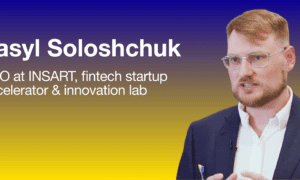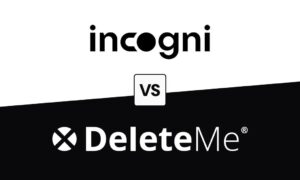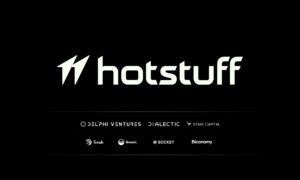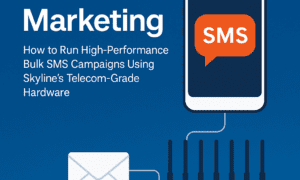Chaitanya Pathak is a product manager with a wealth of knowledge in navigating the dynamic intersection of product development and emerging technology. With over 10 years in the industry, he is now driving innovation as the Chief Product and Technology Officer at LEAPS by Analyttica. It’s a global EdTech platform focused on learning and upskilling in Data Science, Machine Learning, Artificial Intelligence, and Analytics for professionals across industries like healthcare, consulting, and technology.
In his role, Chaitanya has spent over a year developing a framework that enables product and technology leaders from various sectors to leverage AI for rapid product creation. This framework, which is currently in the process of being patented, addresses key aspects such as identifying high-impact AI use cases, managing potential risks, and ensuring ethical implementation. In this interview, Chaitanya will share details about this impactful project and provide insights on how businesses can take advantage of rapidly evolving AI technologies.
Hello, could you first tell us what the most promising ways to productize generative AI are today and why? Which industries can profit the most from generative AI?
I regard GenAI as the boldest technological innovation in recent years. Any human task that can benefit from AI-augmented automation becomes a candidate for productizing GenAI. The degree of automation can vary, ranging from content creation to automated workflows and AI-assisted processes. In the context of enterprise applications, the most profound impact will shift from GenAI being a productivity multiplier to many agentic systems operating in the background, automating and analyzing streams of data.
You have been working for nearly two years on a comprehensive framework
that can effectively integrate GenAI into the product development process.
Can you please elaborate on the concept of this project? What are its primary
goals?
At LEAPS, our vision has always been to build a data analytics platform from the ground up, designed for the “citizen user”—someone who may be a novice with no technical background. One of the key challenges in democratizing data and fostering ground-up innovation has been the skills and literacy required to use various tools for data-driven decision-making. Generative AI and AI-assisted automation technologies have given us the opportunity to democratize data literacy at scale, effectively turning generalists into specialists.
Imagine a machine operator on the shop floor, reading, interpreting data, and making meaningful contributions to the decision-making process. Our Data and AI Literacy Framework, combined with an AI-driven Action Model (patent pending), allows organizations to define literacy goals and learning journeys at all levels. It then operationalizes this journey with personalized goals tailored to each employee, enabling everyone in the organization to contribute to data-driven outcomes.
What challenges lie ahead for product teams trying to keep up with the latest
technological developments and integrate AI into their pipelines?
We reached the tipping point of Generative AI about two years ago, with the timing being perfect—data, hardware, and software all converging while mathematics handled the rest. The rapid pace at which new frameworks are being rolled out makes it challenging for teams to stay up to speed, both in terms of learning and integrating these capabilities into product releases. AI teams need to maintain continuous product development (“keeping the release train running”), while a separate, dedicated team must constantly evaluate and adopt new frameworks.
However, most companies cannot afford such a division of labor, which makes staying at the forefront of AI advancements difficult. Another critical factor is the product architecture itself—having decoupled architectures with multiple abstract layers helps manage change and accelerate releases every time the team needs to integrate newer AI frameworks.
How can your framework help accelerate the digitization of product teams?
The LEAPS framework plays the same role in scaling data literacy that ERP (Enterprise Resource Planning) systems play in business operations. It is built from the ground up with literacy models, goals, an enterprise data dictionary, and personalized experiences. Once configured, AI agents guide non-technical users through data-driven decision-making journeys seamlessly.
One of the key pillars in scaling data literacy is the ability to perform “what-if” analysis on potential scenarios. AI-assisted modes allow users to share their context conversationally, and the AI agent takes over, generating and analyzing these possible scenarios. This approach enables rapid experimentation and scalability without sacrificing impact.
Your company has filed for a patent for this product. Could you please elaborate on what distinguishes it from other similar technologies on the market?
We are in various stages of filing patents for some of the features we have built into the product. The key differentiator of LEAPS from other similar technologies is the functional capabilities, driven by the underlying implementation of algorithms and supported by its software architecture.
LEAPS offers significant empowerment to its users by extending the scope of what they can achieve. We’ve been able to reach this performance through fine-tuning advanced RAG (Retrieval-Augmented Generation) solutions, proprietary rule-based algorithms, and multi-database architectures.
How do you envision the development of AI within the next 5 to 10 years? How
will it transform various industries and, perhaps, the world in general?
We are truly living in exciting times, and the speed of transformation is mind-boggling. AI systems will continue evolving, inching closer to AGI (Artificial General Intelligence) with each passing year. I foresee a massive impact on industries such as education, healthcare, and scientific research. AI agents and multimodal technologies will become commonplace, with distinct leaders emerging in both B2C and B2B foundational solutions—likely from different companies.
We will see more verticalization, with enterprises building proprietary foundational models based on open-source frameworks. While we witness this wave of innovation, challenges and risks will also grow. Concerns around fairness, ethics, security, misuse, and equity will become more prominent as AI continues to advance.





























